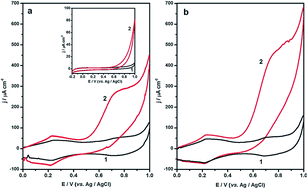A review on the latest developments in nanostructure-based electrochemical sensors for glutathione
Abstract
Glutathione, a low molecular mass thiol compound, is considered a vital biomarker for various disease and cancers owing to the variation in the level of GSH from its normal level in the micromolar to millimolar range in biological fluids and cells. Thus, it is of foremost importance to confirm the accurate and reliable concentration of it in order to provide appropriate treatments to patients. Nanostructure modified electrochemical sensors provide a sensitive, fast, and economic remedy for glutathione analysis. This short review is focused on the latest developments in nanostructure-based sensors from 2012 onward.


 Please wait while we load your content...
Please wait while we load your content...